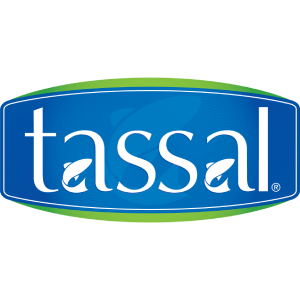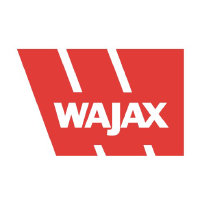GFT Technologies SE
XETRA:GFT

| US |

|
Johnson & Johnson
NYSE:JNJ
|
Pharmaceuticals
|
| US |

|
Berkshire Hathaway Inc
NYSE:BRK.A
|
Financial Services
|
| US |

|
Bank of America Corp
NYSE:BAC
|
Banking
|
| US |

|
Mastercard Inc
NYSE:MA
|
Technology
|
| US |

|
Abbvie Inc
NYSE:ABBV
|
Biotechnology
|
| US |

|
Pfizer Inc
NYSE:PFE
|
Pharmaceuticals
|
| US |

|
Palantir Technologies Inc
NYSE:PLTR
|
Technology
|
| US |

|
Nike Inc
NYSE:NKE
|
Textiles, Apparel & Luxury Goods
|
| US |

|
Visa Inc
NYSE:V
|
Technology
|
| CN |

|
Alibaba Group Holding Ltd
NYSE:BABA
|
Retail
|
| US |

|
3M Co
NYSE:MMM
|
Industrial Conglomerates
|
| US |

|
JPMorgan Chase & Co
NYSE:JPM
|
Banking
|
| US |

|
Coca-Cola Co
NYSE:KO
|
Beverages
|
| US |

|
Realty Income Corp
NYSE:O
|
Real Estate
|
| US |

|
Walt Disney Co
NYSE:DIS
|
Media
|
| US |

|
PayPal Holdings Inc
NASDAQ:PYPL
|
Technology
|
Utilize notes to systematically review your investment decisions. By reflecting on past outcomes, you can discern effective strategies and identify those that underperformed. This continuous feedback loop enables you to adapt and refine your approach, optimizing for future success.
Each note serves as a learning point, offering insights into your decision-making processes. Over time, you'll accumulate a personalized database of knowledge, enhancing your ability to make informed decisions quickly and effectively.
With a comprehensive record of your investment history at your fingertips, you can compare current opportunities against past experiences. This not only bolsters your confidence but also ensures that each decision is grounded in a well-documented rationale.
Do you really want to delete this note?
This action cannot be undone.

| 52 Week Range |
20.35
33.36
|
| Price Target |
|
We'll email you a reminder when the closing price reaches EUR.
Choose the stock you wish to monitor with a price alert.

|
Johnson & Johnson
NYSE:JNJ
|
US |

|
Berkshire Hathaway Inc
NYSE:BRK.A
|
US |

|
Bank of America Corp
NYSE:BAC
|
US |

|
Mastercard Inc
NYSE:MA
|
US |

|
Abbvie Inc
NYSE:ABBV
|
US |

|
Pfizer Inc
NYSE:PFE
|
US |

|
Palantir Technologies Inc
NYSE:PLTR
|
US |

|
Nike Inc
NYSE:NKE
|
US |

|
Visa Inc
NYSE:V
|
US |

|
Alibaba Group Holding Ltd
NYSE:BABA
|
CN |

|
3M Co
NYSE:MMM
|
US |

|
JPMorgan Chase & Co
NYSE:JPM
|
US |

|
Coca-Cola Co
NYSE:KO
|
US |

|
Realty Income Corp
NYSE:O
|
US |

|
Walt Disney Co
NYSE:DIS
|
US |

|
PayPal Holdings Inc
NASDAQ:PYPL
|
US |
This alert will be permanently deleted.
















 You don't have any saved screeners yet
You don't have any saved screeners yet

Thank you very much, and good morning, everybody. Welcome to the Q1 interim statement of GFT Technologies SE. I know there's a lot going on today, so let's jump into the presentation immediately, and be efficient about it.
Look at Slide #2, we have seen dynamic growth in the first quarter. Revenue and earnings outlook was increased. I'll come back to that a bit later. We see very strong demand for digital transformation from all client segments. We have additional scaling from diversification. And on top, we do active price and cost management.
Employee growth is keeping pace, a bit slower, with revenue, and liquidity remains high. On the right side, performance in the first quarter, we saw revenue up 40%. EBT up and all profitability up -- levels up quite heavily, 91% on EBT. We see our 2 sectors, insurance and industry and others growing faster than the average group growth and a strong increase in employees. And the bottom left, we have updated our outlook for the full year but I'll come back to that on the last slide.
So let's go to Slide #3, which is our key figures at one glance. As I said, revenue was up 40% to EUR 173 million. We see our order backlog improved by nearly 60% versus previous year's KPI, which shows -- and let's not forget, right, a year ago, I think everybody was still only half vaccinated, if at all. It was a different situation, and life was more risky. Clients were not ready to fully give full and big projects to GFT or other vendors.
Now it's different. Everybody is pretty eager to perform with the digital transformation they are planning. And they have all handed out the order backlog higher than before. Therefore, 60% increase is not surprising to us. It reflects the better quality of today. And nevertheless, we can only achieve the revenue growth we are guiding at the later slide.
EBITDA, adjusted EBITDA are the same numbers in Q1 because we have no M&A effects between the two. The last earn-out was paid in Q4 of last year, and therefore, the two EBITDAs are identical. On the right side, you see that the EBITDA adjusted and EBITDA includes normal utilization levels. We also include quite normal restructuring levels for GFT, roughly EUR 900,000 in the first quarter.
It was pretty much the same number in the year before. And we had a positive FX effect, as a surprise and as a change to last year where we had a small minus. Looking at EBIT and EBT, we see a strong increase on that level because we have cost efficiencies as we will later see on the depreciation line.
Earnings per share are up 86%. Let's move forward, Slide #4, and look at diversification. The left side of the slide shows our client portfolio. And as we can see, our biggest client, whom in the past, we did report on pretty intensely, we've reduced that with the current year but everybody knows it's Deutsche Bank.
And Deutsche Bank stood for 13% of our revenue in the first quarter. The client -- overall, we're pleased with the diversification, right? We have a strong funnel, although it is not fully keeping up with the pace we're showing on group level when it comes to growth. Therefore, the client groups smaller than EUR 1 million are declining a bit but still okay. While the client groups above EUR 5 million are striving. And we see that our clients are referring to vendors, they know for their major digitization programs. So GFT is very well positioned. And this leads to our clients bigger than EUR 10 million growing to 44% of our overall revenue. A year ago, 34%, for the full last year, it was already 37% and now it's 44%.
On the right side, we see our sector growth. The Banking division has grown by 31%. It still represents 70% of GFT's total business. We see insurance growing by 67%, very strong, now representing 17%. But also industrial clients and other clients have grown by nearly 60%, which now stands for 13% of net sales.
Moving forward, Slide #5, which is the view of the quarters. And we do see that versus the last quarter, Q4 of last year, we see growth of 8%. And usually, as we could see and as we know, Q4 is one of our strongest quarters of the year. Q1 was very strong. There was one impact, March was a tremendously long month with no holidays. This was beneficial for the first quarter of this year. So we ended at EUR 173 million, which is a growth of 40% versus last year. The profitability level is a bit below Q4, but that is normal as well as a lot of fixed price projects end in Q4, which usually boosts the profitability somewhat. And in the Q1, it often goes down a bit.
Let's move forward, Slide #6, revenue by segments. Here we show where the growth is really coming from. And we do see that Americas, U.K. and APAC is leading the GFT growth. We see 60% organic growth. And this is happening especially in [indiscernible] nearly listing all countries in this segment because it's Canada, it's Brazil, it's Hong Kong, it's Singapore, it's U.K. and the U.S. So only Mexico was missing of the countries where we work in that region.
Something new, we have a positive FX effect. We didn't have that in quite a while. So this, together, boosts the growth to 68% on euro level. Euro has weakened versus all our other currencies. And therefore, local revenues and local currency growth is not as strong as in euro. Therefore, we have a positive 8% increase coming from purely FX in Americas, U.K. and APAC. Looking at Continental Europe, well, of course, there's no FX effect to start with that because it's mainly euro based. We see 10% organic growth, which is mainly coming from Germany, Spain and Switzerland.
Let's move forward. Earnings per segment, Slide #7. Here, we do see both segments have increased profitability, but there's a bit of specialty in sight. On the Americas, U.K. and APAC side, we do see stable EBT margin despite increased sales and business development investments, which are mainly burdening on the EBITDA level. And on the EBT, we also benefit from the now missing M&A effects. On EBITDA level, the margin has reduced a bit, mainly because it's early in the year, not all price increases are in yet, and as stated, sales and business development costs are high for sustainable growth.
Looking at Continental Europe, we see a very strong increase in profitability, which is a bit special and limited to Q1. Our internal transfer prices, and I usually refer at this moment that you, as investors and analysts, have a hard time interpreting profitability of our business segments and therefore, you should focus on GFT Group, but let me explain today a bit.
Continental Europe includes Poland and Spain, which are nearshore centers to the segment, Americas, U.K. and APAC. So part of the profit happens in Continental Europe if there is growth in the Americas, U.K. and APAC region. Our transfer prices internally, which have to follow OECD standards for tax reasons, they increased 1st of January. So the colleagues in the U.K. paid higher prices for our internal Polish resources since January 1.
Salary increases in Poland and Spain will happen 1st of April. So you see there is a time gap in which these countries, they turn a profit because of this mechanism internally. We are increasing prices for internal rates. This will bottom out in the second quarter and for the full year, you will not see it anymore. Therefore, it is a onetime effect in Q1 and margin of Continental Europe will reduce slightly in the coming quarters and go back to normal. Again, the reason is a time gap between internal transfer price increases and external salary increases. Okay, that said, maybe we should go back to focusing on GFT Group profitability overall, [ Smile ].
Let's go to Slide #8, revenues by markets. What we do see here is, well, nearly all markets are growing. There's only one minus in the list, which is in France, where we are working for one client, that project is reducing in size, and therefore, we're currently reducing revenues. Scale-up of new clients is taking somewhat longer so this was much changed throughout 2022.
Other markets, U.K. and Brazil are our top 1 and 2, pretty close together by now, are growing very strongly. Brazil on euro basis, even more than 100%. And we see Canada up 58%, U.S. up 34%, Switzerland 54%, very strong growth rates, which in the end bring us to the plus 40% on group level, you have seen. We're very happy with the distribution you see in the cake on the left side because we are diversifying risk across many countries these days.
Which brings me to Slide #9, our biggest clients in the first quarter. And the ones that have not been on this list of top 30 in the first quarter last year, they show a box around them.
So we do see with the box, the Admiral Group, an insurance company from the U.K. We see Al Rajhi Bank, which is a bank from the Arabias whom we built a digital bank for in Malaysia, Beneva, and BTG Pactual from Canada and Credit Suisse. There are 2 not disclosed names. One is a private equity company from the U.S., and one is an Italian insurance company who are not allowing us to use their names and logos.
Let's move forward, income statement, Slide #10. Not much to go deep about revenues, of course, up 40%. Just to comment on operating income, main driver here is that we had more FX effects who are partially shown in operating income and partially shown in operating expenses. So both are higher in volume because of those effects. Result, though, is the EUR 200,000 profit we showed on the Slide #3. Cost of purchased services up 72%. So we are using more freelancers and external resources in Q1 than we did last year, which shows that hiring people is truly a challenge at the moment. Personnel expenses, therefore, only up 31%, slower than revenue growth of course, overcompensated by purchased services.
The fourth bullet point on the right indicates the ratio of combining all purchased services and our personnel expenses versus revenue. And this ratio stood at 83% last year, and we were able to reduce it to 81%. Cost for people versus revenue, as I said, salary increases will mainly kick in, in April. So this ratio will go up a bit in the second quarter.
Other operating expenses, up 80%. This shows we have strong investments in recruiting and business development. So it is above revenue right now. We think it will normalize again, but the first quarter showed strong investments here. I was already referring to the depreciation cost, which, as you can see, are down by 8%, and this is on the back of 40% revenue growth. This means we are not utilizing more expensive IT infrastructure to deliver the revenue. And we are not using more office space because the office space is part of depreciation via the IFRS 16 rules. So a highly scalable business at GFT at the moment.
And last but not least, also amortization has been reducing, leading to depreciation and amortization and heavily contributing to the improved EBIT and EBT. Tax rate, one comment on that. It was 29%. In the first quarter, we are looking at 28% roughly for the full year.
This brings me to Slide #11, cash flow analysis. While in a nutshell, net cash is still positive. That is the number on the graph on the very right for that EUR 10 million. We started the quarter on the very left at EUR 1.93 million. Operating cash flow, which you see at plus EUR 3.6 million was significantly below last year's number.
We obviously have a shift of when cash flows come in. And there are a couple of effects which I want to mention. First of all, 2021 was a very good year. We had very strong bonus payouts in March, far higher than a year ago. And therefore, cash flow-wise, March was expensive because of variable pay.
We had growing revenues, which shows we have an increase in working capital, and we didn't have the ideal working capital position at the 31st of March. So this will turn around, as always. Last year, Q1 was very good. This year, we will see Q2 and the later quarters benefiting. Nevertheless, GFT is highly cash generating. It's sometimes a matter of cutoff date when we are able to show it to the investors.
Therefore, operating cash flow improving over the quarters to come. Cash flow from financing activities was simply payback of loans because of our strong cash position. Cash flow from investing activities, this is purely hardware office equipment that we're buying. We didn't buy any company in this time period, therefore, limited number, as already stated, leads to limited depreciation. And a bit of FX affect, which overall leads to an unchanged strong net cash position. Sometimes we're asked, are you looking at M&A? Yes, we are looking at M&A, and we have firepower because we're not using our credit facilities at the moment as we could.
Let's move forward, Slide #12. This is a quick one, the balance sheet. The total balance sheet did not change much versus year-end. And there's not really any major impact. Maybe just to mention that our noncurrent assets, which includes our office space IFRS 16 accounting, has increased a bit because we had to roll over some of our lease contracts in Madrid and London. So they moved from a 1-year duration back to a longer duration of 4 to 5 years. And this is always an impact on the IFRS 16 number. But that's it. Nothing really complex about the balance sheet at the moment, which bring me to Slide #13, GFT employees.
Growth in the first quarter, I mentioned it before, it was 30%, coming from a lot of countries, but mainly Brazil. We're now more than 8,000 employees, 8,120 to be precise. Utilization remained on a high level while still onboarding a lot of people. And on the right side, the attrition also remained on a high level, but it didn't touch the 20% yet. I think in the call, early March, we said that we want to keep it below 20%. We're afraid it will be between 20% and 22%. People we lose, but we will have to rehire immediately. That's attrition. But it's stuck at 19.4% in the first quarter. Let's see where it goes in the second.
And the last bullet point, the number of contractors is, of course, in line with the increased purchases, is now 1,300 people. It was 830 a year ago. And this brings me to my last slide, the outlook for 2022. We do see sustained growth. We see increased EBT margin versus previous year. Our guidance is changing. We had a guidance on the revenue side of EUR 680 million so far. We're increasing that to EUR 720 million, which would be an increase on the revenue full year 27%.
EBITDA adjusted and EBITDA are both predicted at EUR 79 million now. The initial guidance was EUR 75.5 million. And on the EBT level, we're moving from EUR 55.5 million old guidance to EUR 58 million new guidance. We're seeing strong demand, and this is mainly driving the EBT and the profitability. We are scaling up costs in parallel because we do see the trend for longer-term digitization projects going on into '23, which means we have to invest in sales and business development to sustain this growth for the years to come.
But this was fun reporting the Q1 numbers, as I had predicted last year, we should have a couple of good quarters. Please do not expect guidance increases similar to last year. I think with EUR 720 million, we kind of hit what we're able to recruit from the market in '22. Maybe we prove ourselves wrong and there's a bit of upside to it. But in the end, what limits us is not the business side, it is the capacity side of things, getting people.
I'm sometimes asked how is the Ukraine working and the war working for GFT. It is two sided. On the one hand side, we see clients addressing us if we could help them replace people who are -- they are no longer using in Belarus or Russia or capacity is now missing in Ukraine. We can't help much because our organic growth is that strong that we're not really waiting for that additional demand. That's kind of a positive signal.
The negative signal is that, of course, peers and competitors are now looking into the middle of Eastern Europe for hiring, moving out of Belarus and Ukraine somewhat. So there's a bit more hiring pressure, especially in the Polish market. So it goes in both directions. What is important for us, Europeans, and part of that is that we have a very close view on the Ukraine war.
When we look at our numbers from Americas, U.K., APAC, there the situation is somewhat different. The war is further away, not only locally also in the thinking and behavior of the clients. And we see that the growth rates there are simply intact. While in Europe, there's a bit of an insecurity about the war and what it will mean. On the other side of the Atlantic, we see far more optimism when it comes to the future at the moment.
Therefore, we do see those growth rates as sustainable, and they should lead into '23. So that's maybe a bias we Europeans have on the global market. It's not that European when you live on the Americas side. And that is what GFT is currently benefiting from, which is driving our growth rates. Well, enough. Questions answered who have not been asked yet, and let's go to the Q&A session.
[Operator Instructions]
The first question is from Knud Hinkel of Pareto Securities.
I have, I think, 3 or 4. First one on your renewed guidance, the EBITDA margin. It seems that it's pretty much in line with the foreseen increase of revenue. So the margin remains the same. As I think that the additional growth that you're seeing now does not come from Deutsche Bank, it means that the margin of the additional business is higher than what you've seen before. Is that a correct a observation in your view? And can you confirm that? That would be my first question.
Second question on your recruiting efforts that have been very successful in Brazil as far as I understand. Maybe you can say something why you focused your hiring efforts on that reason that much, and how come that you were very successful in that regard.
Third question, business with the top 2 clients, as we called it earlier, or Deutsche Bank, you said something how the business developed in the first quarter. It's very nice from an analyst point of view. Could you say something also on -- maybe on your outlook for the full year 2022?
And the last question, some housekeeping. You said utilization is at normal levels. So my reading is that so any burdens from that is through our [indiscernible] and -- our belief to stay at that level during the full year. Maybe you can say something on the outlook for restructuring expenses for the full year? That would be helpful.
All right. Well, lots of questions. Let's combine the 1 and 3, which is top 2 clients, Deutsche Bank. Deutsche Bank revenues in the first quarter were pretty much exactly the same number as in the year before. The percentage changed, right? It reduced to 13%, but the nominal number was pretty much unchanged.
We do see this go down somewhat over the year. I think we've been mentioning that there is a transition going on in Spain away from us going to the Deutsche Bank internal Asia hub, the Indian hub. So we will, over time -- we believe we will see a reduction in Spain, but we do see growth in Germany and the U.K. and probably in the U.S. as well.
So there will be [ result ] of small negative decline, but overall, absolutely manageable. The margins of Deutsche are intact, and therefore, our margin not changing overall also means that overall, our margins are intact and are not moving heavily. It's more depending on long-lasting business under MSAs, where it's a bit harder to increase prices, while in newer projects, contracts, it's easier to increase prices. And this is what drives our margin. But it's not Deutsche Bank, it doesn't really influence it because the margins in all other businesses are just as good.
Recruiting, why focus on Brazil? Well, we don't focus on Brazil. We focus on demand. And where we do see demand, where we're able to position our offering, we will then search for people. In Brazil, we have a very, very strong HR department, and we have a way of going to the market, recruiting people that is very efficient and successful. And I think we have, by now, a pretty strong brand. We are one of the top 3 players in Brazil. And therefore, it is easier to find people there than maybe in some of our other markets because we have gained a lot of traction.
But it is not we want to grow people in Brazil and then search for demand, it goes the other way around. We see the demand and then we follow up with people. And that's why Brazil is driving. But other markets are growing as well. So when you see 60% growth in Canada, for sure, there's also people growth behind that. And when we see 50% growth in the U.K. and a lot in Asia, there's a lot of growth coming from our new Vietnam office, where we are growing to nearly 200 people now, getting very efficient, and to the Polish organization. So it's across the board. It's not only Brazil, but the Brazilian numbers are simply outstanding.
Utilization, yes, no burden. For the year, of course not. It will be a good year on utilization numbers. Restructuring for the full year, I think we budgeted at EUR 2.5 million. So we've spent a bit more in the first quarter than 1/4 but we should be able to stay within the EUR 900,000. And that is, indeed -- it doesn't sound nice, right? But that is a housekeeping number. We need those EUR 2 million, EUR 2.5 million just from normal restructurings that happen in an 8,000 people organization. Hope that helped?
Yes.
The next question is from Andreas Wolf of Warburg.
Congratulations on the strong start to the year. My questions would be the following. So what is the impact of an additional point in attrition on profitability on margin levels? I don't know if it's possible to calculate it or name a number. Maybe you could, nevertheless, shed some light on the relation here.
Then regarding the strong top line development, do you see a change or a shift in the projects that clients are asking for? Have those changed compared to the pandemic or pre-pandemic situation, clients emphasizing different or other areas of their digitalization?
And then on pricing, in one of the remarks in the presentation, you kind of alluded to improved pricing, if I interpreted this correctly, if that is right, how shall we think about price increases? Are you -- or do you have to actively go to clients and carry out negotiations? Or is this basically an effect coming from, let's say, tenders where you can win a tender at higher assumed daily rates and other clients are then dropping out of the client list as they are not willing to pay higher prices? How shall we think of this procedure?
And then -- that's my last question. The impact of FX on profitability, does it move approximately in line with the impact on top line? Or is the impact on profitability more pronounced? .
All right. Well, that's a list. The impact of 1% additional attrition on the margin would be minimal. Simply, it would have an impact on our revenues. So if we don't get the people, or in other words, we lose more people, and we can't rehire. In the first step, it would reduce the potential for our revenue, it doesn't immediately hit the margin. Only if the numbers would go really, really high, so we're not talking 1% additional but 10%, that's when we would be talking about margin. But if we would have 22% attrition, it might hinder us to get the next EUR 5 million because we're not getting the people. And then on the margin side, the margin does not change. We simply don't get the revenue and be attached to gross margin.
On the top line, shift in projects, technology size, yes, there is a shift between today and the year ago. A year ago, as I said, banks were behaving somewhat more cautious. About 2 years ago, they were behaving far more cautious. Last year, more cautious. What we now see is the willingness to invest into relevant longer-term programs. And this was not the case a year ago. And this is what changed throughout '21, and we're benefiting from in the end in our order book that you see. Clients are doing digital transformation changes to a major extent, be it in Brazil, major banks going for the cloud, be it in the U.S., major banks having a multiyear cloud strategy or a replatforming strategy for their core banking.
And they are ready to dig deep into this and not just hand out small projects. And that's why we believe that this part of the market, this is ongoing. This won't change easily. There's big business cases behind, and this is optimism not only for '22, but for the years to come.
And therefore, technology, yes, the shift in cloud is still king. And we do see those transformational software packages that we are working on from Mambu or Thought Machine, taking more and more room with our end clients. And with big end clients, not with small banks, with major banks. So there are probably going to be a lot of news about these companies in the next 24 months. Pricing. Well, how does pricing change? Of course, it's exactly, as you said, it is both. In existing clients, in existing M&As, in existing programs, it is negotiations with the end client. The client -- he's not market agnostic. He knows IT costs are increasing in his own company just like in ours. Of course, they don't like us coming for price increases, but they understand and there is some acceptance. We have to be creative on how we sell it. As always, that's part of the sales job description to also show the upside of our increased prices, maybe we're able to reduce the permit levels, use more juniors than seniors.
And then we get to price increases in the end. It is, of course, a bit easier when we go for tenders, new projects in new technologies, be it in existing clients or in new clients because then it's more a greenfield approach to pricing, while in a long-lasting client relationship, it's a bit brownfield, gray field. And you have a harder time negotiating prices.
So it is blurred. It's a mix of everything. And overall we are, that's what we currently see for the year, able to compensate the strong salary increases of the year which we're experiencing with the price increases we're generating. And yes, this sometimes means we have to say no to projects and sometimes also to long-lasting clients if they are absolutely not willing to be part of a price increase.
And your last question, impact of FX. Yes, it goes in every direction. There's a bit of a positive impact coming from the real to euro ratio because Brazil is so big today. So the pure recalculation of Brazilian real profits to euros has an impact. At the same time, our sales in the U.S. has a harder time using Brazilian resources, which is not to a very big extent of the Brazilian workforce, but it is a relevant margin contributor.
If the real gets more expensive, our profits in the U.K. reduce somewhat. So there is a bit uplift on the profitability coming from FX, but I think overall, it is not major. And knowing the real, especially the real, we know how volatile it is, let's see where it's moving in the coming quarters. I hope that helped. More questions?
The next question is from Wolfgang Specht of Berenberg.
Yes, congrats from my side as well and for the excellent reporting. Three or four additions from my side. First, the utilization rate at 90%, is that basically a function of some people still being -- new people being in training and thus cannot be charged in customer projects yet or where is the delta to, let's say, [ 100% ] coming from mostly?
Then on the churn figures, can we assume that you have significantly higher churn in the nearshoring locations than at your, let's say, traditional consulting and salespeople in the western part of your organization?
Third question would be on your external contractors. Let's say, is it a number or a ratio to your overall workforce that is suitable? Or would you be definitely interested to raise the number of permanent workers or could it be an advantage to have some flexibility here and keep that share of external consultants?
Last question is on your industries. We saw a sharp increase in industry and others. Is there already, let's say, kind of subsector approach here that could be, let's say, reach critical mass to kind of spin it off and scale it individually like you're doing with Swiss banking and insurance?
Thank you very much. Yes, utilization rate, you're right, 10% are missing. I always ask for those 10%, right? That's my role. But it is more than training, right? Part of it is purely onboarding. You have people who join the company, they can't go to available project on day 1. There is a time lag depending on the market, of 1 week to sometimes you have to put them to training, maybe even certification, 8 weeks.
So if you have a 20% attrition and you grow, you have a lot of new joiners. And they are a relevant part of the utilization, 10% missing. The second is, as you said, it is training. And last but not least, also important for GFT is our tech people are used for sales. So when we do pitches, when we go to clients, we need the expertise from our professional service units brought to the sales teams. And this is also eating into those 10%. For sure, 3% of that is pure sales support. And therefore, that is the main reasons for the 10% gap.
On the churn, you're right. Nearshore is usually a bit higher, that's what we see. Our Polish, our Brazilian numbers are a bit higher above. What we do see across the board is all countries, traditional or nearshore countries, are above previous year average. So we see a pickup everywhere. And in Germany, the pickup is a bit smaller or in Spain. And you're right, the traditional markets have a smaller attrition or churn in people, and the Polish, the Brazilian markets, where a salary increase maybe makes a bigger difference for the individual, we see a bit a higher number. But across the board, churn has gone up. percentage-wise, pretty much the same in all countries.
Contractors. Contractors have two specialties in GFT. One is we use them, as you say correctly, for capacity. And sometimes, you simply can't hire fast enough, so you bring on board capacity. And at some point, this hurts because bringing people in as employees might be more cost efficient. That's part number one.
And then there's Poland, and our Polish organization -- and it's a bit the same all over Eastern Europe. People have the choice. They join us as contractors or as employees. Contractors have some social security benefits. So in times like these, when the markets are on the employee side, it's an employee market at the moment, they like to choose the contractor position, the work contract is not so important.
And when times are tough, they come back as -- they try to be employees again. So we have this shifting. And for us, cost base wise and how people are treated by GFT, how they treat us is the same. If they are a freelancer or if they are an employee. So we have to carve out Poland from the equation. But for all the other markets, it's mainly a resource play. Sometimes a longer-term resource play. And in some markets, sometimes it is a bit of overshooting, maybe Q1 was showing that. And we want to return to employees, but the market currently is not really made for that. So it might take a bit of time, maybe only in '23.
Last question, industry. Industry and others, we call it, and it is quite diverse. So as I said, we have credit card, health care companies in there, but also manufacturing, which we address with our storyline that we have a product made in Germany and used across the board. We've worked very closely with some of the hyperscalers and with industrial clients, with car manufacturers, car part manufacturers.
So the growth there is twofold. Partially, it is around producing industries. And partially, it's around all other industries. And therefore, it's a bit too early to say, hey, it's been fully successful. It's going as planned. At least, we do see good growth rates. That's where we wanted to be across the board in others and in industrial clients. So from a Q1 perspective, it's going in the right direction. Let's revisit throughout the year. I think it's still a story to be explained. And do we have more questions?
The next question is from Sven Sauer of Kepler Cheuvreux.
Only 2 questions left. The first one is you mentioned that -- and also in the press release, that the -- duration of your contract is increasing now. And I was wondering, do you also see a shift in the type of the projects or pricing, for example, more T&M or more fixed price projects, especially in light that GFT was able to adjust for inflation due to the short-term contracts that they previously had? And the second question is if you could give an update on the digital bank project? I think it's in Malaysia.
Yes, correct. Happy to do so. Duration of contracts increasing, but -- no, funny enough. The duration of what we have signed as contract is decreasing -- is increasing somewhat. Yes, it is. But what is far more important is the duration of those programs, the clients are starting is increasing, which means they are allocating relevant budgets to programs, which then they hand out in contract periods, which are not changing much from the past.
Let me go -- I'll come back to that in a second. But I think I mentioned it before, but the programs they're running now and my example is a cloudification program or a replatforming program of your core banking for a new technology. This is multimillion -- a big banks' triple million numbers project. And if they decide to go over this, if they agree the business case is the right business case to follow, then it's something that will follow up on over time.
And we see that across the board. That's the big change after COVID that the banks are back to heavily digitizing their infrastructure. Same goes for insurance companies. So the programs are increasing. Now what does it mean for GFT? First of all, it doesn't mean they changed the approach. Often, these approaches are agile. And agile means projects are compartmentalized. And they are put into pieces that are manageable and then often handed out as T&M or fixed price projects lasting 6, 8, 12 weeks.
Me as CFO, I love it because project risks are easily manageable in these time periods, a 5-year contract is far more complex to manage. And therefore, the way they are moving, the programs are getting longer durations. The contracts, a bit, yes, that's good. but it is the programs that really drive the story. Of course, we are aware that this current inflation on our pricing, especially on salaries, might not end in '22. So we are eager to be flexible on pricing.
So we don't want very long fixed price projects out there. And if we have them, we put inflation adjustments in for sure. The current demand on T&M and fixed price has not changed much. It's pretty much the same ratio. Some clients prefer T&M, some prefer fixed price. It's in the end the clients' choice how we do it. We like both, and we like the upside of fixed price projects a lot because I think we're quite good at then delivering in line with the potential upside. But again, the client decides the contract type. I hope that answers the contract, especially the program topic, if it's increasing duration.
Digital bank in Malaysia, yes, I think it has now gone live for family and friends. The Al Rajhi Bank has gained one of those digital banking licenses in Malaysia and these digital banking licenses are handed out all over Asia these days. And digital banking license means you may be a bank, but you may not have the front end. You may not have a physical office, only digital. That's why it's called the digital banking license. And these banks usually try to be very efficient about the cost base and very scalable. And therefore, in this case, they used Thought Machine, a scalable back end, core banking back end and we built the bank.
And it went live in 6 months. The duration we have never achieved with Thought Machine so far. Very, very fast, very efficient and it's now in testing phase. So it is now first delivered and in testing phase because that was your question, what is the status. It has not gone live yet to the public market, but this will come soon.
And we're optimistic that on this platform, we've generated, which we can manage with Thought Machine technology, but also with the Mambu technology, when needed and as decided by the client. We will win more digital banks across Asia over time because our toolbox is ready to go and to be repeated.
[Operator Instructions]
The next question is a follow-up from Knud Hinkel of Pareto Securities.
Yes. Yes, one follow-up, maybe a more general question. The overall profit pool for IT service in the banking sector. So a banking sector has been under pressure in the last couple of years, not only because of low interest rates, but also because of increasing competition, fintechs and so on, especially in Germany, probably also in a significant market for you.
Now that interest rates go up again, do we expect the -- what -- so I would expect that the banking sector should do better in the next couple of years from that. Do you also expect then the profit pool for IT service companies to grow from that? I know that it's more about technological changes, but maybe also a side effect from that coming, do you see that?
But that's a lesson learned from the past banks who earn good money, right, more easily spend higher IT budgets than banks that have a profit problem. And with Deutsche, we've suffered through a ramp down, as you all know, over some years. Therefore, the fundamental assumption is right. A bank earning money is good for IT service companies.
And the profit pool in Europe, I fully agree, was probably a lot under pressure over the last years. It's been different on the other side of the Atlantic, looking at American banks. Their profit pool has been far better, and they are spending, right, and it's similar in Brazil. And when you look at some of the European banks that are also working with the Brazil or Mexican subsidiary and you look where the profits come from, when they report, the Brazilian side, the South American side is usually heavily contributing to their profits.
And so they have a bigger profit pool already. Now as a portfolio of companies like GFT is with markets in Europe and the Americas, over the last 20 years, we always have shift in demand cycles. And currently, it is the Americas, North, South and Asia cycle in our benefit. We believe the Europeans will come back, yes. If the increasing interest rates and hopefully improved cost/income ratios of European banks shows in their profitability over the next years, we see them turning up higher profits. And this hopefully leads to then higher spending on the IT side again.
That's why we have this balanced portfolio. We never have everybody growing at the same time. Maybe the Americas side will slow down somewhere in future, we will learn, but we believe the Europeans have a chance to come back. Maybe not in '22 yet, maybe it's '23, but we will see that happening, correct. So I agree to the assumptions. Do we have more questions?
There are no further questions at this time. I hand back to Jochen Ruetz for closing comments.
So thank you very much. We will have Q2 numbers in August, as always, summertime. We will do the Q2 numbers always with more technological expertise. Marika Lulay will then, again, join me. So all the tech questions can be answered a bit more in depth, as we always do it. And the Q1 and Q3, you have to live with my answers. I hope it worked for today. We all wish you a good day. And talk, see you soon. Bye-bye.